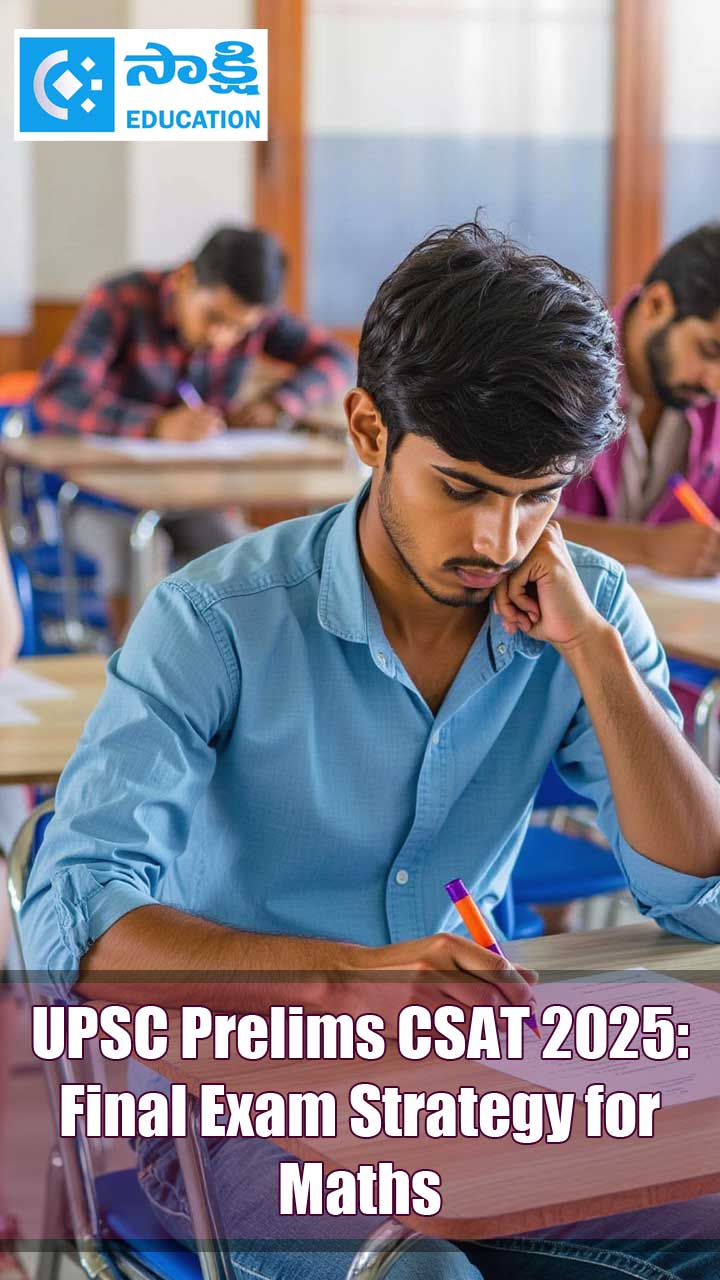Indo-Sri Lankan Relations
Sakshi Education
- Introduction:
- India’s Interests in Sri Lanka:
- India’s Responsibility as a Major Regional Force towards the Unity and Integrity of Sri Lanka: India, as a major regional force has a responsibility towards, the unity and integrity of Sri Lanka, according to analysts.
- India Committed to the Territorial Integrity of Sri Lanka: India is committed to the territorial unity and integrity of Sri Lanka even while seeking the accommodation of the anxieties and aspirations of the Tamil minority.
- India’s Interests in Sri Lanka:
- Background:
- 1987 India-Sri Lanka Accord:
- On July 29, 1987, the India-Sri Lankan Agreement was signed by India’s Prime Minister, Mr. Rajiv Gandhi and the Sri Lankan President, Mr. J.R. Jayawardene which culminated in a conflict between the Indian Peace Keeping Force (IPKF) and the LTTE.
- The Accord laid down a comprehensive framework to redress the grievances of Tamils and other minorities.
- The Accord acknowledged the unity, sovereignty and territorial integrity of Sri Lanka and the multi-ethnic and multilingual character of the country. It recognized that each ethnic group has a distinct cultural and linguistic identity which must be carefully nurtured.
- The Accord bound the Sri Lankan Government to the position that the Northern and the Eastern provinces had been areas of historical habitation of Sri Lankan Tamil speaking peoples.
- The Accord paved the way for the merger of the North and the East into a single province, subject to a referendum within a year.
- The agreement on the merger of the North and the East into a single province was based on the assumption that all militant groups would lay down arms and create the right atmosphere for peace and the rule of law.
- 1989-90 - Withdrawal of IPKF from Sri Lanka: The then Sri Lankan President, Mr. Premadasa entered into an understanding with the LTTE which resulted in a 14-month ceasefire. As a result of this the IPKF withdrew from Sri Lanka.
- Involvement of the IPKF in Sri Lanka resulted in the loss of 1,200 Indian lives, including that by assassination in 1991, of the former Prime Minister, Mr. Rajiv Gandhi.
- 1994 - Normalisation of Relations: The coming to power of the Kumaratunga Government in Sri Lanka in the democratic elections held in Sri Lanka in 1994 created a favourable atmosphere for strengthening bilateral ties backed by mutual trust and confidence in each other.
- 1987 India-Sri Lanka Accord:
- India’s Stand on the Post-War Scenario in Sri Lanka:
- Sri Lankan President Called up India’s External Affairs Minister to Confirm the Armed Resistance by the LTTE had Ended: On May 18, 2009 the Sri Lankan President Mahinda Rajapaksa called up India’s then External Affairs Minister Pranab Mukherjee to confirm that the armed by the Liberation Tigers of Tamil Eelam (LTTE) had ended and its leader V. Prabakaran was dead.
- India asked Sri Lanka to tackle the grievances of the Tamil minority which gave rise to the ethnic conflict.
- India Sought Political Steps towards Effective Devolution of Power within the Sri Lankan Constitution: An External Affairs Ministry statement said that India sought political steps towards effective devolution of power within the Sri Lankan Constitution so that Sri Lankans of all communities, including the Tamils, could feel at home and lead lives of dignity of their own free will.
- India Promised to Work with the People and Government of India to Provide Relief and Rehabilitation to the Displaced: India had promised to the people and government of Sri Lanka to provide relief to those affected by the ethnic conflict, and to rehabilitate all those who had been displaced, bringing their lives to normality as soon as possible.
- India wanted Sri Lanka to take Steps that Guaranteed Safety, Better Quality of Life and Genuine Feeling of Participation by Sri Lankan Tamils:
- India was concerned at the unease among the parties committed to a peaceful solution in eastern Sri Lanka, where the LTTE had already been defeated.
- India wanted Sri Lanka to take steps that guaranteed safety, a better quality of life and the genuine feeling of participation by Sri Lankan Tamils in both north and eastern provinces.
- India wanted Sri Lanka to adhere to its earlier promise of implementing the 13th Constitutional Amendment which should include moving some items from the concurrent list to the provincial list and setting up of a second chamber of federal representatives.
- Humanitarian Relief Being Provided by India to Tamils in Sri Lanka:
- India has already committed Rs.100 crore relief support to the internally displaced people and the Tamil Nadu government announced a package of Rs.25 crore.
- India’s humanitarian relief included dispatching over one lakh family packs containing rations and shelter materials for a nuclear family that would last three weeks.
- India was considering a Rs.500 core aid package for civilians displaced by the ethnic conflict, according to the then External Affairs Minister Pranab Mukherjee.
- India also planned to increase the size of the de-mining team to ensure that civilians had access to more safe areas than was possible at present.
- On May 22, 2009 India dispatched a team of 27 doctors and paramedics to the war-ravaged northern Sri Lanka to help the Sri Lankan Tamils.
- An Indian Air Force IL-76 left for Sri Lanka with the medical team carrying 30 tonnes of medicines, worth more than 3 crore, for replenishing the stores at the field hospital run by the Indian Armed Forces in a camp for the Internally Displaced Persons (IDPs).
- Since March 2009 India has been operating a self-contained emergency medical unit with hospital in Sri Lanka. The 110-bed facility has 62 members operating on the north-east coast of Sri Lanka.
- Since November 2008, India has distributed 1.7 lakh family relief packs of dry rations, personal hygiene items, clothes, utensils and water purification tablets.
- India Sent Special Envoys to Sri Lanka (May 20-21, 2009):
- Envoys Sent for Discussions with Sri Lanka on Issues of Welfare of the Displaced Civilians and a Political Solution to the Ethnic Conflict: India sent National Security Adviser M.K. Narayanan and the then Foreign Secretary Shiv Shankar Menon for discussions with Sri Lankan authorities on issues related to the Welfare of 2.7 lakh displaced civilians and a political solution to the ethnic conflict in Sri Lanka.
- Statement on the Meeting of the Indian Envoys with the Sri Lankan President:
- Both countries emphasised the urgent need to resettle the Internally Displaced Persons (IDPs) in their villages and towns of habitation and provide them basic and civic infrastructure as well as means of livelihood to resume their normal lives at the earliest.
- India was committed to provide all possible assistance in the implementation of such a plan in the areas of de-mining, civil infrastructure and reconstruction of houses.
- Both sides emphasised the urgent necessity of arriving at a lasting political settlement in Sri Lanka.The Government of Sri Lanka indicated that it would proceed with implementation of the 13th Amendment of the Constitution.
- The 13th Amendment made after the 1987 India-Sri Lanka Accord, aims to provide devolution and autonomy to the Northern and Eastern provinces.
- The Government of Sri Lanka also intends to begin a broader dialogue with all parties, including the Tamil parties, in the new circumstances, for further enhancement of political arrangements to bring about lasting peace and reconciliation.
- Indian Envoys Interacted with Representatives of a Number of Political Parties: India’s special envoys to Sri Lanka also met other top Sri Lankan officials. They interacted with representatives of a number of political parties including the Tamil National Alliance (TNA) and the Sri Lanka Muslim Congress.
- External Affairs Minister S.M. Krishna’s Statement in Parliament (July 09, 2009):
- India had been assured by the Sri Lankan government of its intention to pursue a political process that envisages a broader dialogue with all parties, including the Tamil parties, the full implementation of the 13th Amendment to the Sri Lankan Constitution, and to go beyond, so as to achieve meaningful devolution of powers.
- The cessation of hostilities gave Sri Lanka an opportunity to make a new beginning and build a better future for all her peoples and, therefore, for the region as a whole.
- India was convinced that a closure of the cycle of violence and terrorism that had plagued Sri Lanka required an inclusive political process of dialogue and devolution. Such a process must address the legitimate aspirations of the minorities, including the Tamil community, within the democratic framework of a united Sri Lanka.
- India would provide every possible assistance in the task of rehabilitation, resettlement and reconstruction. The government had earmarked Rs.500 crore for this purpose and was willing to do more.
- India was engaged in a de-mining process - a prerequisite for displaced people to return to their homes - reconstruction of houses, supply of shelter material, medical assistance, and repair of civil infrastructure.
- The Sri Lankan government had committed itself to resettling most of the internally displaced persons in 180 days. The Indian High Commissioner to Sri Lanka had visited some of the camps and had been informing the Indian government about the developments in Sri Lanka.
- India continued to closely monitor incidents, affecting the safety of its fishermen in the waters between India and Sri Lanka. India had reiterated to Sri Lanka that there was a need to ensure strict compliance with the understanding on fishing arrangements reached between the countries in October 2008.
- Bilateral Meeting between India’s Prime Minister and Sri Lankan President (Egypt, July 17, 2009):
- India’s Prime Minister Manmohan Singh held a bilateral meeting with Sri Lankan President Mahinda Rajapaksa after the conclusion of the Non-Aligned Summit in Sharm-El-Sheikh in Egypt on July 17, 2009.
- The discussions covered issues of mutual interest such as the nearly 3 lakh war displaced in the north, proposal for devolution of power and a political solution, fishermen in the waters north of Sri Lanka, the current development in the north and east continued mutual cooperation, according to the Statement issued by the Sri Lankan Presidential Secretariat.
- The Indian Prime Minister said that he had the highest confidence in President Rajapaksa’s capability in resolving the tasks presented in the post-conflict situation in Sri Lanka, as had a clear vision of what had to be done in the current situation.
- The Sri Lankan President assured Dr. Singh that the government was taking all steps to keep to its target of re-settling the displaced in 180 days.
- Prime Minister Manmohan Singh invited the Sri Lankan President Mahinda Rajapaksa to visit India at the earliest opportunity and Mr. Rajapaksa reciprocated.
- Prime Minister Manmohan Singh’s Statement in the Parliament:
- India had legitimate concerns about the welfare of Sri Lankan Tamils. It had a bearing on Sri Lanka’s relations with India, Dr. Singh told Mr. Rajapaksa during their bilateral meeting in Egypt.
- The Prime Minister said that he spent the bulk of the time in the bilateral meeting with the Sri Lankan President discussing the plight of Tamils and told him that the relief and rehabilitation of three lakh Tamils in 33 temporary camps should be considered just the beginning.
- India expected Sri Lankan to create conditions to ensure that there was devolution of power, as envisaged by India and Sri Lanka, to meet the legitimate political aspirations of the Tamils.
- Conclusion:
- India can Play a Vital Role in Sri Lanka: Analysts feel that India still has a vital role to play in Sri Lanka in the aftermath of the defeat of the LTTE. India can play a crucial role in the rehabilitation and reconstruction of the war-ravaged regions of Sri Lanka’s North and East. This would have a calming effect on both the majority and minority in Sri Lanka.
- India wants the Root Cause of the Ethnic Conflict to be Addressed:
- After the end of the Eelam War IV, India said that it would work with the people and government of Sri Lanka to provide relief to those affected by the tragic conflict, and to rapidly rehabilitate all those who had been displaced, bringing their lives to normality as soon as possible.
- India stressed that the moment was right to address the root causes of the ethnic conflict.
Published date : 14 Nov 2009 02:35PM













